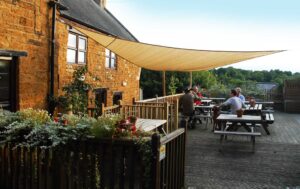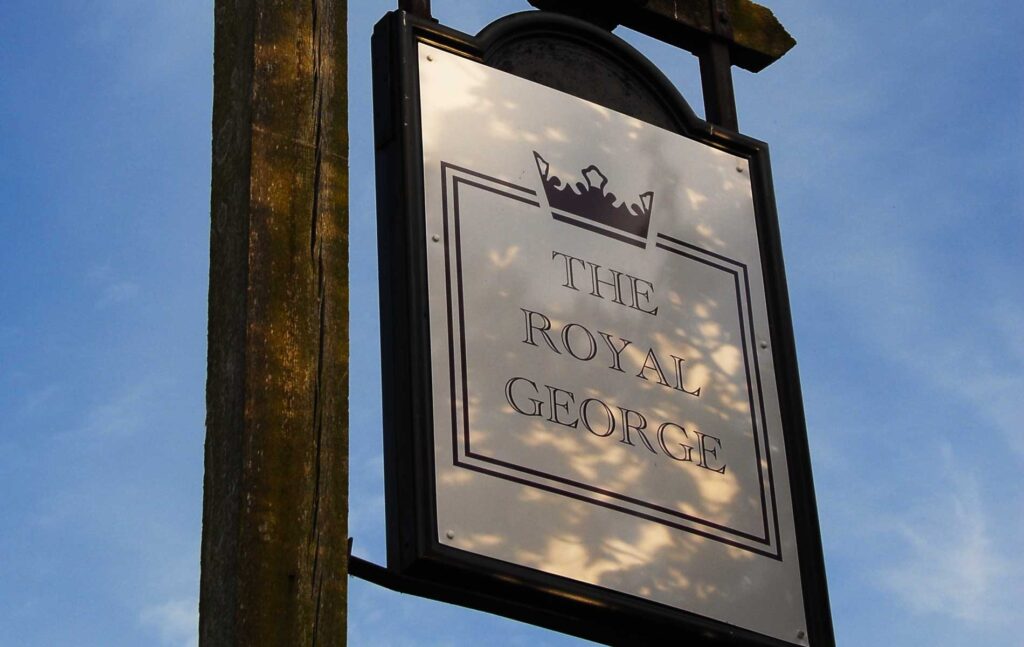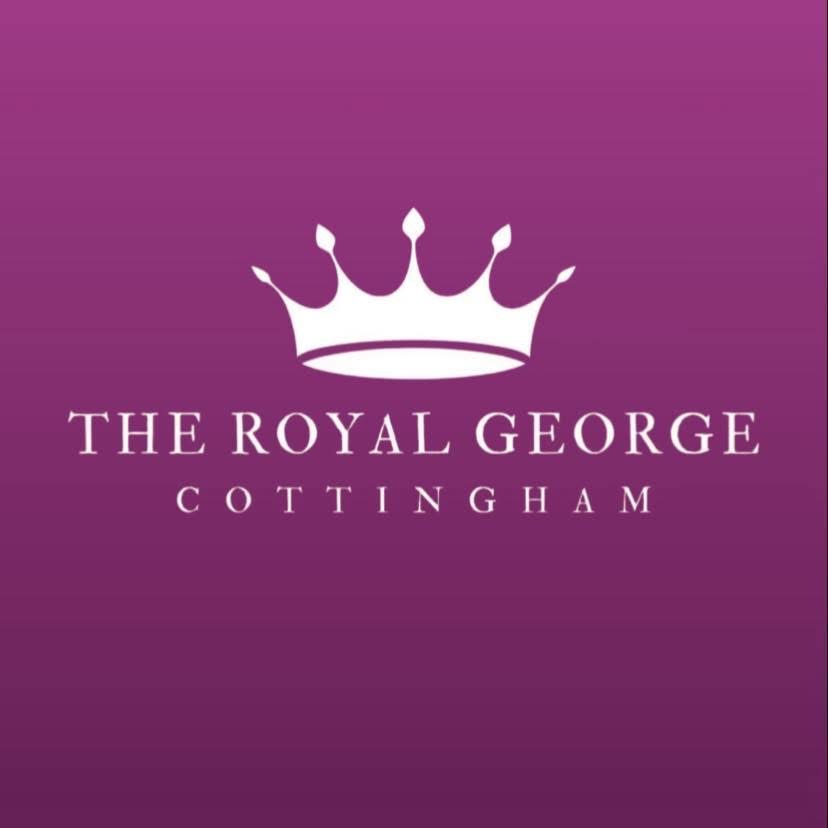Discover
About Us
The
Building
 Parts of the building date back to the 13th Century and are Grade II listed. Timber samples from various trusses, crucks and beams were taken to Oxford in the year 2000 and submitted for ‘dendrochronology’. These tests showed that the trees used were all felled in 1262 and indicate a construction date in the summer of that year (which is seven years before Marco Polo, aged just seventeen, set off with his father for adventures in Asia).
Parts of the building date back to the 13th Century and are Grade II listed. Timber samples from various trusses, crucks and beams were taken to Oxford in the year 2000 and submitted for ‘dendrochronology’. These tests showed that the trees used were all felled in 1262 and indicate a construction date in the summer of that year (which is seven years before Marco Polo, aged just seventeen, set off with his father for adventures in Asia).
It makes The Royal George the earliest known domestic ‘cruck building’ in England. Crucks are ancient trusses that rise from the walls and join at the ceiling to support the roof. The crucks in our roof are unusual as they are made from two separate trees (one very crooked – a clear sign of an early construction period) rather than a single tree split in two, which was the normal way. In addition, our crucks are rare in another way. They are full height, extending from the earth floor to the ceiling rather than simply from the top of a wall.
 According to public records, the way the western corner of our southern gable is cut back (you can see this clearly from our deck) indicates a “much trafficked route, with the cut permitting access around the corner angle”, suggesting the building’s use as an inn right back to medieval times. The cut-back construction made it easier for horse-drawn coaches to round the corner.
According to public records, the way the western corner of our southern gable is cut back (you can see this clearly from our deck) indicates a “much trafficked route, with the cut permitting access around the corner angle”, suggesting the building’s use as an inn right back to medieval times. The cut-back construction made it easier for horse-drawn coaches to round the corner.
Smoke-blackened timbers are evidence of a large central fire that was set inside the building. There would have been louvres in the roof to let the smoke out. This makes the building of national importance. Thanks to its timbers, brickwork and central communal fire, The Royal George has a claim to being the oldest inn in England.
Customer
Testimonials




The
Name
Despite its 750-year history, the Royal George name only dates to the 18th Century. In 1746, work started at Woolwich dockyard on a new warship, named Royal George. She was launched on 18th February 1756 and was the largest warship in the world. Over the next 25 years, HMS Royal George served as a flagship to many Admirals and Rear-Admirals. The warship took part in the battle of Cape St Vincent on 16th January 1780 and helped relieve Gibraltar three days later.
 Sadly, Royal George’s demise just two years later on 29th August 1782 was far from heroic. HMS Royal George was again preparing to sail to Gibraltar and was anchored in the Solent just outside Portsmouth harbour, to take on supplies. She was ‘heeled over’ for repairs to her hull by rolling her guns on the port side to the centreline of the ship, causing her to tilt to starboard. But she was heeled too far, passing her centre of gravity. The lower gun ports were open as barrels of rum were being loaded through them at the time, allowing an inrush of seawater.
Sadly, Royal George’s demise just two years later on 29th August 1782 was far from heroic. HMS Royal George was again preparing to sail to Gibraltar and was anchored in the Solent just outside Portsmouth harbour, to take on supplies. She was ‘heeled over’ for repairs to her hull by rolling her guns on the port side to the centreline of the ship, causing her to tilt to starboard. But she was heeled too far, passing her centre of gravity. The lower gun ports were open as barrels of rum were being loaded through them at the time, allowing an inrush of seawater.
Royal George sank in 65 feet of water. Some 1200 people were on board, comprising the full complement of crew, around 300 women and 60 children visiting the ship in the harbour and more than 200 visiting relatives. Only 255 people survived, including eleven women and one child.
So why the name? Royal George’s finest hour was undoubtedly in 1780. It seems that was also the year that this inn applied for a liquor licence. Presumably they didn’t need one prior to that! Historical references say that all public houses granted a licence in 1780 were named the Royal George in honour of the great warship’s victory.

Quite apart from the finest food, outstanding real ales and the kind of atmosphere you will only find in a traditional English coaching inn, The Royal George also offers a truly fascinating history.